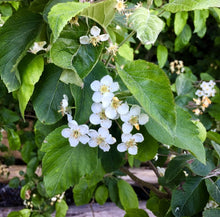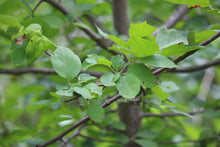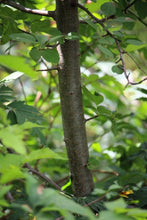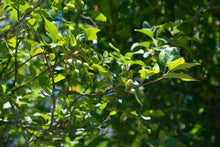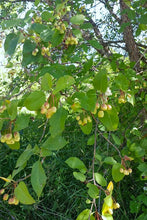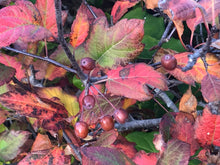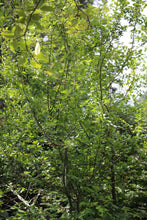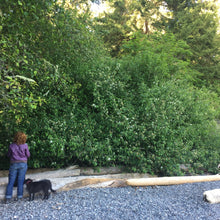
Malus fusca
Western crabapple’s small stature and three-season interest make it an excellent yard tree for sunny or mostly sunny areas where soils are moist to wet. In the spring, small clusters of pinkish, white fragrant blossoms hang plentifully from its branches. By fall, the flowers mature into small, sour, golden-red crabapples that persist into winter, providing visual interest and serving as an important late-season food source for more than 30 species of Pacific Northwest birds. These attractive fruits are complemented by showy orange and bright red fall foliage.
- Plant type/canopy layer: deciduous, perennial, small tree
- Size at maturity: 15 - 40' tall, 15 - 25' wide
- Light requirements: full sun, part-sun/part-shade
- Moisture requirements: moist to seasonally wet soil
- Bloom time: April - July
- Growth rate/ease: medium growth rate, easy to grow
- Wildlife support: flowers attract and provide a nectar source for hummingbirds, adult butterflies, bees and other insect pollinators; berries are enjoyed by over 30 species of birds and small mammals; dense foliage provides both food and cover for wildlife; overall plant attracts and supports beneficial and pest eating insects and is a caterpillar host plant and larval food source for native butterflies and moths
- Native habitat/range: grows in moist riparian forests and the edges of wetlands in Western Oregon and north through Washington into Canada and Alaska. . Portland Plant List - yes.
- Special features & uses: supports hummingbirds, wildlife favorite; landscape uses include pollinator gardens, raingardens, woodland gardens, habitat hedgerows, windbreaks and erosion control
Gardening with Western Crabapple: Western crabapple is ideal for fully to mostly sunny corners of the garden with moist to wet soils, including those that are poorly draining and/or have heavy clay. It can even live near salt water!
Companion Plants: Plant it with other sun and wet-loving natives such as red twig dogwood, pacific ninebark and serviceberry.
Photo Credit 1 & 8 (flowers, hedge): © Hydrocycler (Elizabeth Dougherty), some rights reserved (CC-BY)
Photo Credits 2, 3, 7 (foliage, branch, habit): © Jan Smith, some rights reserved (CC-BY)
Photo Credit 4 (early fruit): © Ryan McMinds, some rights reserved (CC-BY)
Photo Credit 5 (fruits): © Casey H. Richart, some rights reserved (CC-BY)
Photo Credit 6 (fall color): © Aaron Liston, some rights reserved (CC-BY)








